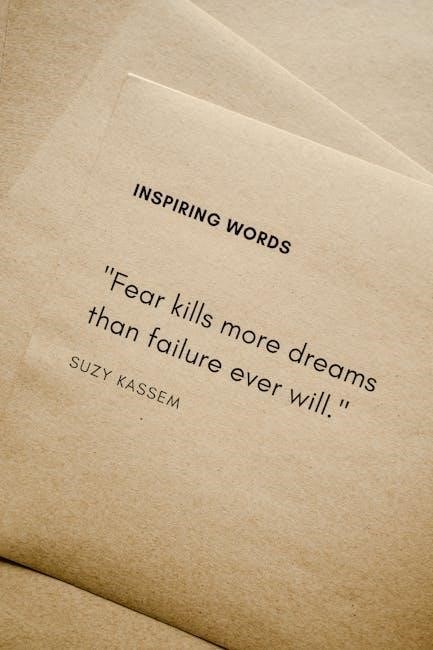Lettering guides are essential tools for creating uniform characters in various styles and sizes. They help artists and designers achieve consistency in hand lettering projects, ensuring precision and professionalism. These guides are versatile, catering to both technical drawing and artistic lettering, making them indispensable for beginners and professionals alike.
1.1 Definition and Purpose of Lettering Guides
Lettering guides are tools designed to assist in creating uniform and precise lettering. They often consist of templates or rulers with predefined letter shapes, sizes, and styles, helping artists and designers maintain consistency. Whether for hand lettering, calligraphy, or technical drawing, these guides ensure accuracy and professionalism. They are particularly useful for beginners, providing a foundation for mastering letter construction and spacing. By using lettering guides, creators can achieve polished results, making them an indispensable resource for both artistic and commercial projects. Their versatility allows adaptation to various styles, from modern brush lettering to traditional calligraphy.
1.2 Importance of Lettering in Art and Design
Lettering plays a crucial role in art and design, serving as both a functional and aesthetic element. It communicates messages with clarity and emotion, elevating the impact of a design. Whether in branding, signage, or art pieces, lettering adds personality and depth, making it a key tool for visual storytelling. Its ability to convey tone and style ensures that designs resonate with their intended audience. As a form of artistic expression, lettering also allows for creativity and experimentation, making it a cornerstone of modern design. Its significance extends across mediums, from digital interfaces to handcrafted art, solidifying its role as an essential element in the creative process.
Tools and Materials for Lettering
Essential tools for lettering include pens, brushes, and nibs, while paper and surfaces play a crucial role in achieving desired effects. Proper materials ensure precision and creativity in lettering projects.
2.1 Essential Tools: Pens, Brushes, and Nibs
Pens, brushes, and nibs are the cornerstone of lettering. Technical drawing pens and dip pens offer precision for intricate details, while brush pens like Tombow Dual Brush Pens create dynamic strokes. Brushes with flexible tips are ideal for varying line widths, adding expressiveness to lettering. Nibs, available in different sizes, are perfect for calligraphy and custom styles. Each tool provides unique effects, allowing artists to explore various techniques. Choosing the right nib size and tip type is crucial for achieving desired results. Experimenting with these tools helps in mastering lettering and developing a personal style. Proper care of these tools ensures longevity and consistent performance.
2.2 Choosing the Right Paper and Surfaces
Selecting the right paper and surfaces is crucial for lettering. Smooth, high-quality paper prevents ink bleeding and feathering, ensuring clean strokes. Bristol board or hot press paper is ideal for detailed work, while cold press paper adds texture. Surfaces like canvas or wood can also be used for unique effects. Always test paper with your tools to avoid smudging or blotting. The surface choice directly impacts the final result, making it essential to match paper type with your lettering style and tools for optimal performance and artistic expression.
Basic Lettering Techniques
Mastering basic lettering techniques involves understanding letter construction, stroke variation, and spacing. Practice foundational shapes and lines to build consistency. Start with simple alphabets, focusing on precision and flow, gradually exploring more complex styles as skills improve. Regular practice helps refine muscle memory and enhances overall lettering quality, forming a strong foundation for advanced techniques.
3.1 Understanding Letter Construction
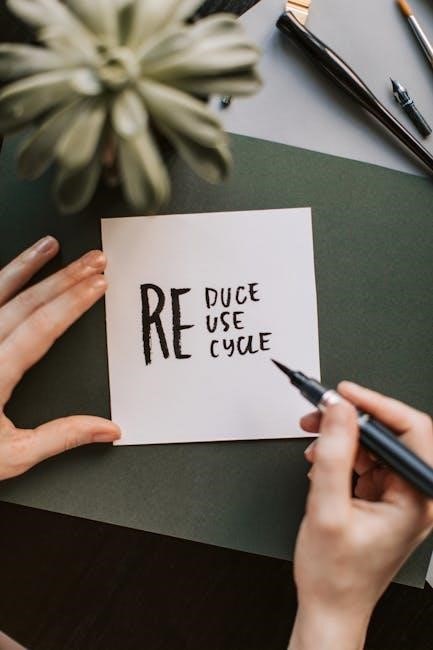
Letter construction is the foundation of lettering, focusing on the anatomy of each character. It involves understanding verticals, horizontals, curves, and diagonals, ensuring balance and harmony. Each letter has a unique structure but must align visually within a composition. To master letter construction, start by practicing basic shapes and lines, gradually incorporating variations. Pay attention to letter spacing, alignment, and the relationship between letters. Consistent practice helps develop muscle memory and improves the overall quality of your lettering. This understanding is crucial for creating cohesive and visually appealing designs in any style.
3.2 Mastering Thick and Thin Strokes
Thick and thin strokes are fundamental in lettering, creating rhythm and balance. Thick strokes, typically on downstrokes, add weight, while thin strokes, on upstrokes, provide lightness. Tools like brush pens or nibs help achieve these variations. Practice basic exercises, such as vertical and diagonal lines, to control stroke transitions. Consistency in stroke contrast enhances readability and adds visual interest. Start with simple drills, gradually incorporating them into letters and words. This skill elevates your lettering, making it more dynamic and professional.

The 30-Day Lettering Planner
The 30-day lettering planner is a structured program designed to enhance your lettering skills progressively. It divides into four weeks, starting with fundamentals, exploring styles, advancing techniques, and concluding with personal projects.
4.1 Week 1: Foundations of Lettering
Week 1 focuses on building a strong foundation in lettering. It introduces the basics of letter construction, understanding strokes, and essential tools. You’ll practice simple shapes and letters, gradually improving consistency and control. This phase is crucial for mastering the fundamentals, ensuring a solid starting point for more complex techniques later on.
4.2 Week 2: Exploring Different Styles
Week 2 delves into exploring various lettering styles, such as sans serif, serif, script, and faux calligraphy. You’ll learn to adapt your strokes and techniques to match different aesthetic goals. This phase introduces tools like dual brush pens and nibs, allowing you to experiment with thickness, texture, and flourishes. Practice exercises focus on transitioning between styles seamlessly, while inspiration prompts encourage creativity. By the end of this week, you’ll gain confidence in mimicking professional styles and developing your unique voice in lettering.
4.3 Week 3: Advanced Techniques
Week 3 focuses on refining your skills with advanced techniques such as flourishes, intricate details, and complex letterforms. You’ll explore how to seamlessly integrate decorative elements while maintaining readability. Exercises emphasize varying stroke thickness, experimenting with kerning, and mastering letter spacing. Tips on using guides or light boxes for precision are included. This week encourages creativity while refining your ability to produce polished, professional-level lettering. By the end of Week 3, you’ll be confident in tackling intricate designs and applying these techniques to real-world projects like signs, branding, and artistic compositions.
4.4 Week 4: Personal Projects
In Week 4, you’ll apply your advanced skills to personal projects, such as custom signs, branding materials, or artistic compositions. This week emphasizes creativity and practical application, allowing you to explore unique styles and techniques. You’ll refine your ability to adapt lettering for different contexts, from digital designs to physical media. Tips for experimenting with tools and styles are provided, along with resources like lettering guides and stencils. By the end of this week, you’ll have a portfolio of personalized projects showcasing your mastery of lettering. This is your chance to innovate and express your artistic vision fully.
4.5 Conclusion and Next Steps
Congratulations on completing the 30-day lettering planner! By now, you’ve mastered foundational skills, explored various styles, and applied advanced techniques. The final step is to continue practicing consistently. Join lettering communities or enroll in workshops for further growth. Experiment with personal projects, combining different styles to develop your unique voice. Utilize resources like free lettering worksheets and guides to refine your craft. Remember, lettering is a journey requiring patience and creativity. Stay inspired, embrace challenges, and share your work to connect with fellow artists. Your dedication will lead to continuous improvement and exciting opportunities in the world of lettering.

Resources and Inspiration
Explore workshops, online courses, and lettering communities to enhance your skills. Utilize free worksheets, guides, and tutorials for continuous learning and creative inspiration in your lettering journey.
5.1 Workshops and Online Courses
Enroll in workshops and online courses to master hand and brush lettering techniques. Platforms offer structured programs, from basic letter construction to advanced styling. Berlin-based studios provide hands-on lettering, sign painting, and calligraphy workshops. Online tutorials, such as the Ultimate Hand Lettering Guide, include free worksheets and step-by-step instructions. Courses cover various tools, like pens, brushes, and nibs, and explore styles from modern brush lettering to classic calligraphy. These resources are ideal for beginners and professionals seeking to refine their skills and explore creative lettering applications.
5.2 Lettering Communities and Forums
Joining lettering communities and forums connects you with enthusiasts worldwide, fostering inspiration and growth. Platforms like Instagram and Pinterest host vibrant groups where artists share their work and provide feedback. Online forums dedicated to hand lettering offer resources, tutorials, and discussions on techniques and tools. These communities are invaluable for learning, staying updated on trends, and gaining motivation. Engage with others, share your creations, and explore diverse styles to refine your craft and stay inspired in your lettering journey.

Custom Lettering Applications
Custom lettering applications are diverse, ranging from signage and vehicle graphics to branding and marketing materials. They enhance visual appeal and effectively convey messages in various creative and professional contexts.
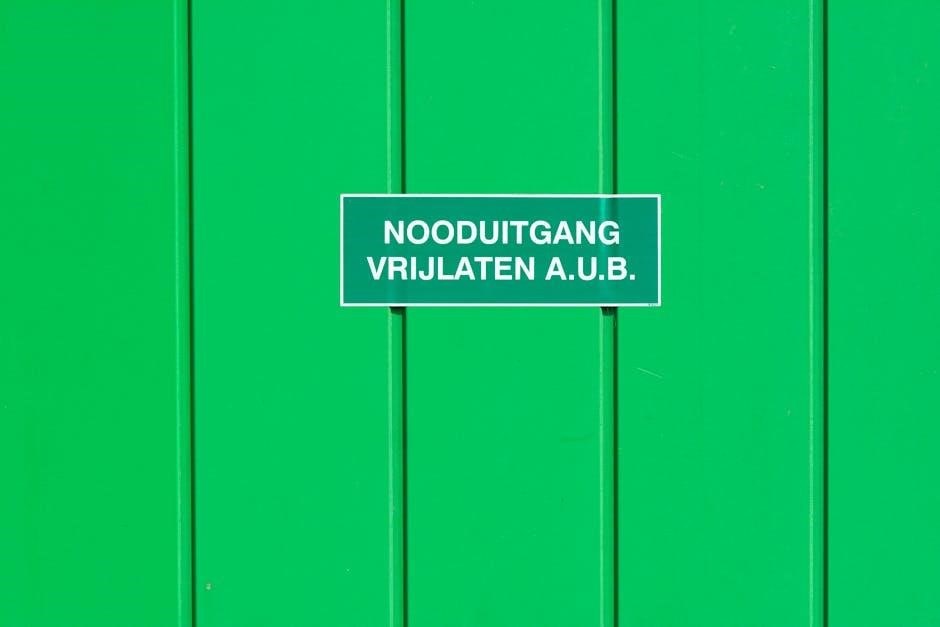
6.1 Hand Lettering for Signs and vehicles
6.1 Hand Lettering for Signs and Vehicles
Hand lettering for signs and vehicles adds a unique, artistic touch to visual displays. It enhances brand identity and grabs attention, making it ideal for storefronts, boats, and trucks. Custom vinyl lettering is a popular choice for its durability and ease of application. Services like yacht lettering combine style with functionality, offering LED and backlit options to create eye-catching designs. Whether for marine vessels or commercial signage, hand lettering ensures a professional and visually appealing result, tailored to specific themes or branding needs.
6.2 Lettering in Branding and Marketing
Lettering plays a vital role in branding and marketing by creating visually appealing designs that convey a brand’s identity. Custom lettering enhances logos, slogans, and advertisements, making them stand out. It connects emotionally with the audience, ensuring memorable campaigns. Vinyl lettering and vehicle wraps are popular for promoting businesses, while storefront signs attract local customers. The style and precision of lettering reflect the brand’s personality, making it a powerful tool for effective marketing strategies. Whether for digital or physical media, lettering ensures a professional and engaging presentation that captivates the target audience and strengthens brand recognition.

Troubleshooting Common Mistakes
Common mistakes in lettering include uneven strokes, inconsistent spacing, and poor alignment. To address these, practice basic letter construction and use guides for uniformity. Incorrect tool usage can lead to blurry or wobbly lines; ensure pens and brushes are suitable for your surface. Overloading compositions can cause imbalance; simplify designs for clarity. Regular practice and reviewing tutorials help refine skills. Using high-quality materials prevents smudging or fading. Finally, patience is key—lettering improves with dedication and attention to detail. Troubleshooting these issues ensures polished, professional results in your lettering projects.
Mastering lettering requires patience and practice. Celebrate small progress, stay consistent, and embrace creativity. With persistence and the right tools, you’ll unlock endless artistic possibilities—keep creating!
8.1 Final Tips for Continuous Improvement
Consistency is key to refining your lettering skills. Dedicate time daily to practice, even if briefly. Experiment with various tools and styles to discover your unique voice. Study the work of experienced lettering artists for inspiration and insights. Utilize online resources, workshops, and communities to stay updated on trends and techniques. Embrace mistakes as learning opportunities and celebrate progress, no matter how small. Surround yourself with creative influences and stay curious. Remember, mastery is a journey—enjoy the process and let your passion for lettering shine in every stroke.
8.2 Free Lettering Worksheets and Guides
Enhance your lettering journey with free worksheets and guides available online. These resources offer practice sheets for brush pens, nibs, and pencil lettering, helping you refine strokes and styles. Many guides include templates for alphabets, numbers, and symbols, perfect for mastering consistency. Websites like RIWraps.com and creative blogs provide downloadable materials tailored for beginners and advanced artists. These tools often feature blank spaces for personal practice, allowing you to explore various techniques and styles, from sans serif to calligraphy. Utilize these guides to polish your skills and unlock new creative possibilities in hand lettering and design.
